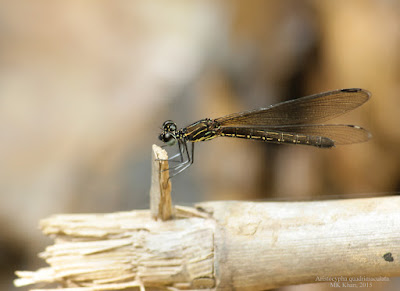Agriocnemis clauseni (Fraser, 1922)
Family: Coenagrionidae
Genus: Agriocnemis
Species: Agriocnemis
clauseni (Fraser, 1922)
Similar Species: Agriocnemis kalinga, Agriocnemis femina,
Agriocnemis pygmaea
Common
name: N/A
Habitat: Stream associated forest patches
Distribution: Sylhet
Abundance: Rare
Flight
Season: August
IUCN Red
List Status: Least concern
Worldwide
distribution: Bangladesh, Bhutan, India,
Myanmar, Nepal, Thailand
The most uncommon species among the Agriocnemis of Bangladesh. I have sighted the species from the north eastern forests. The male is bright blue in color.
The juvenile male can be recognized by their greenish antehumeral stripe.
The females are reddish, found close to male.
the juvenile female is more orange in color





























